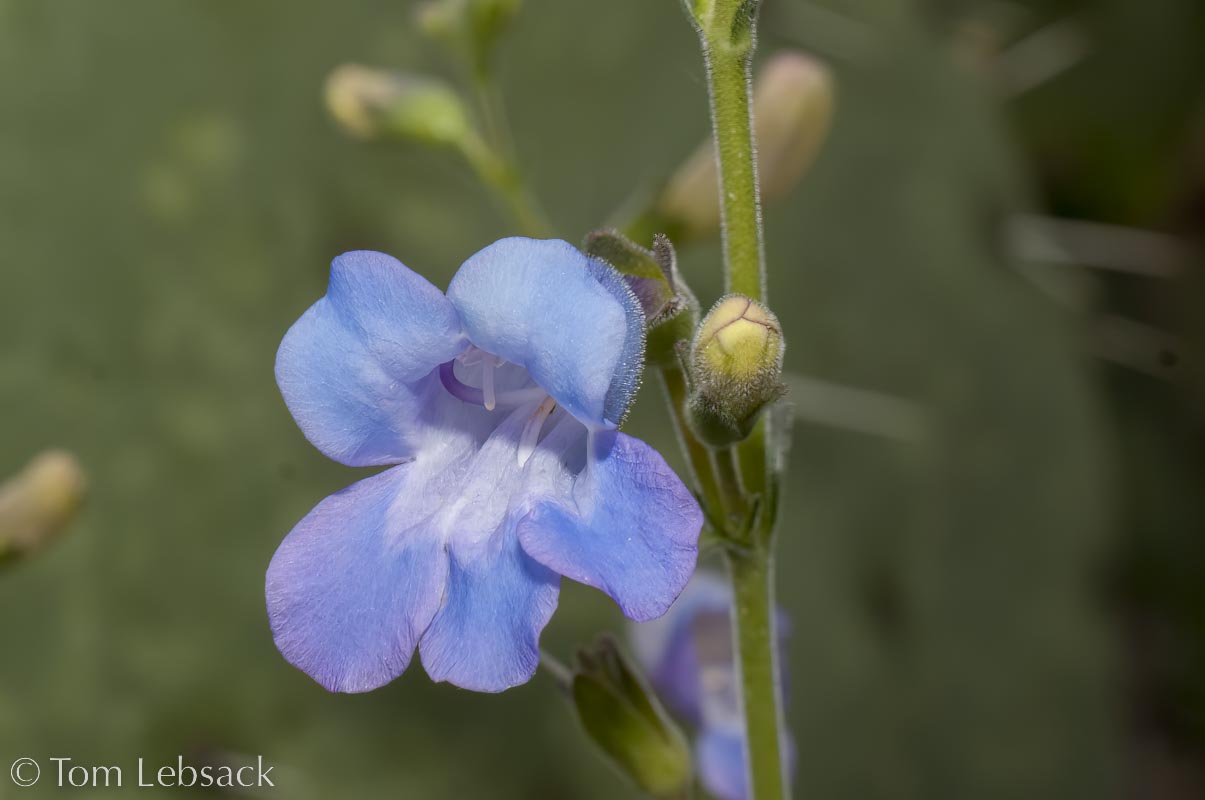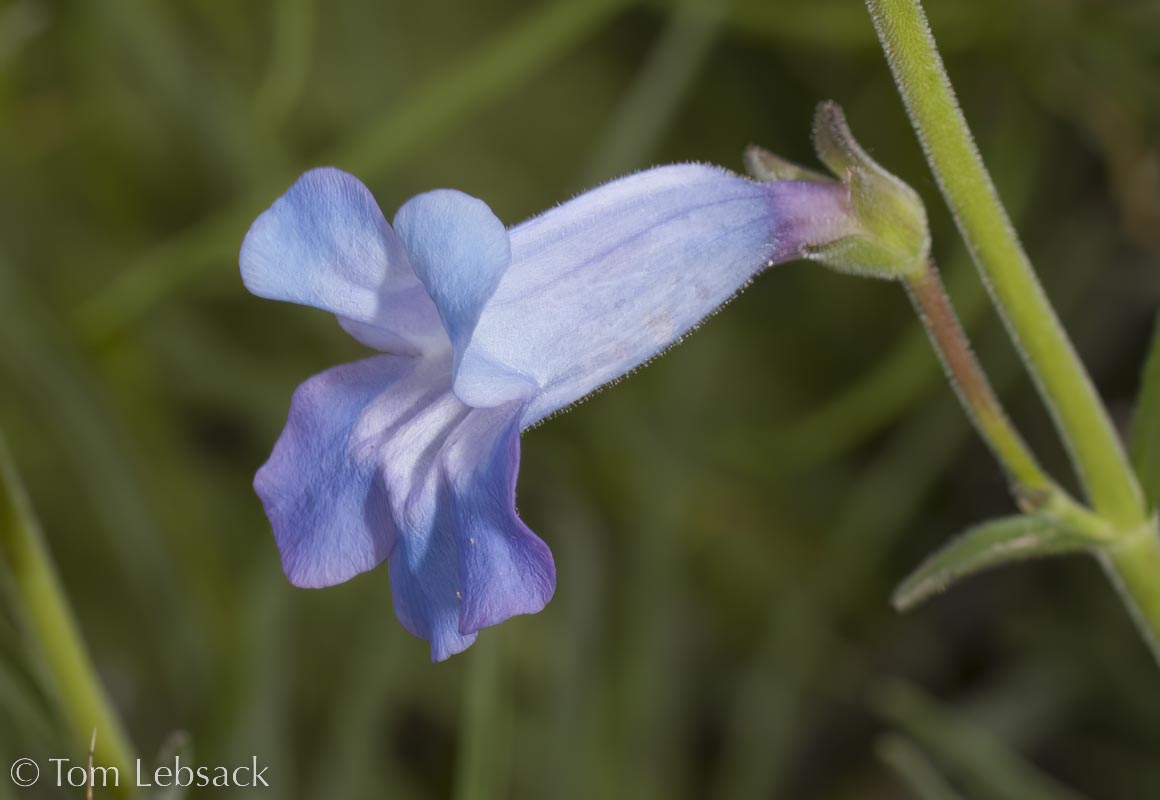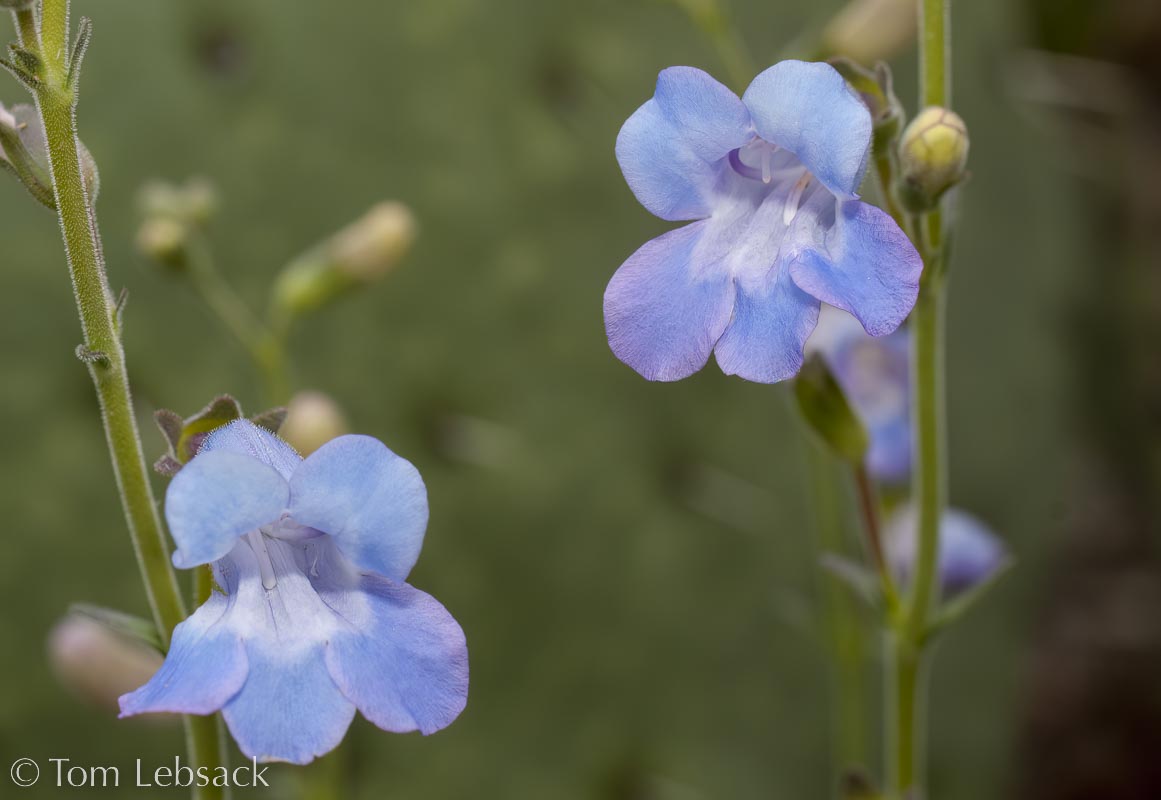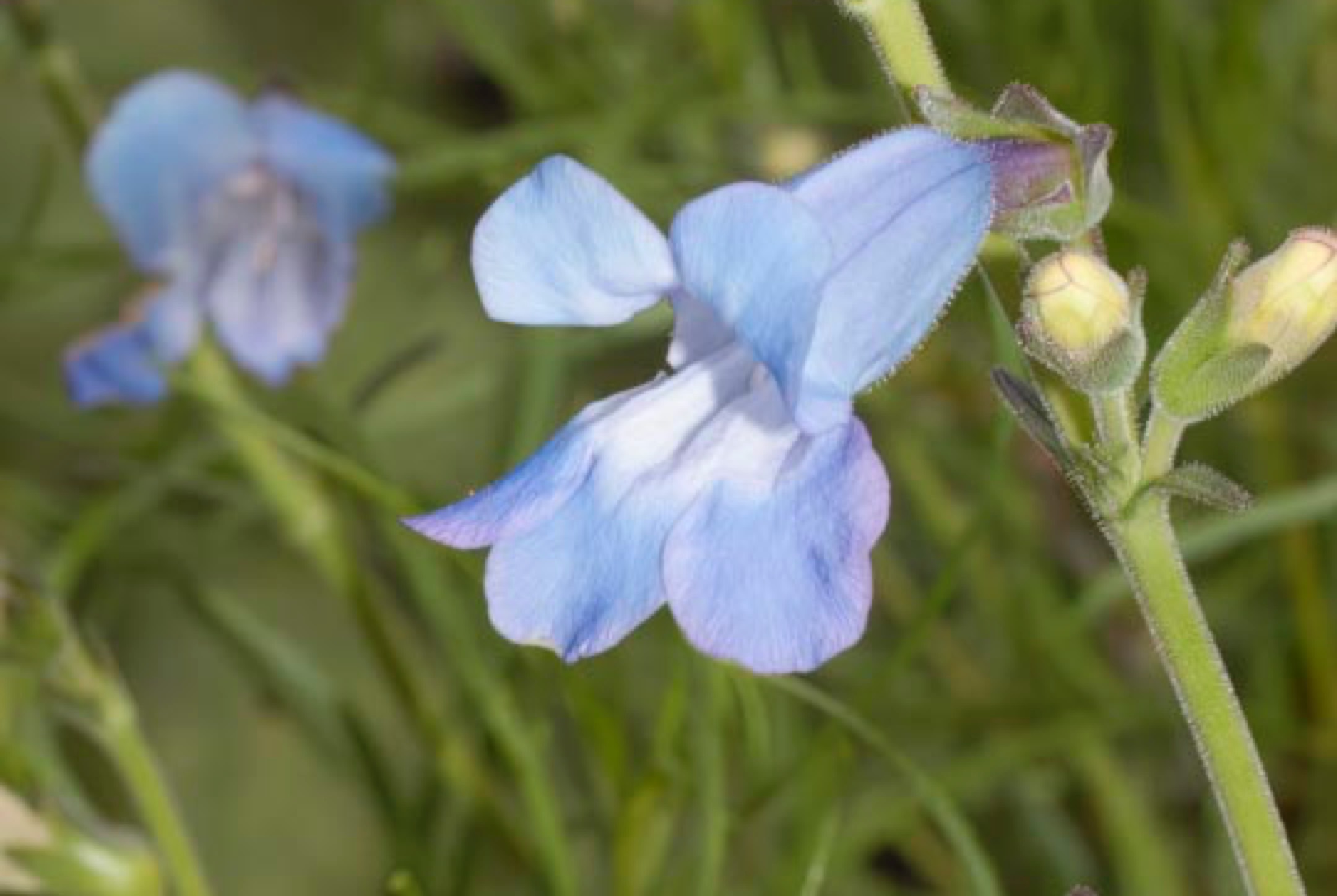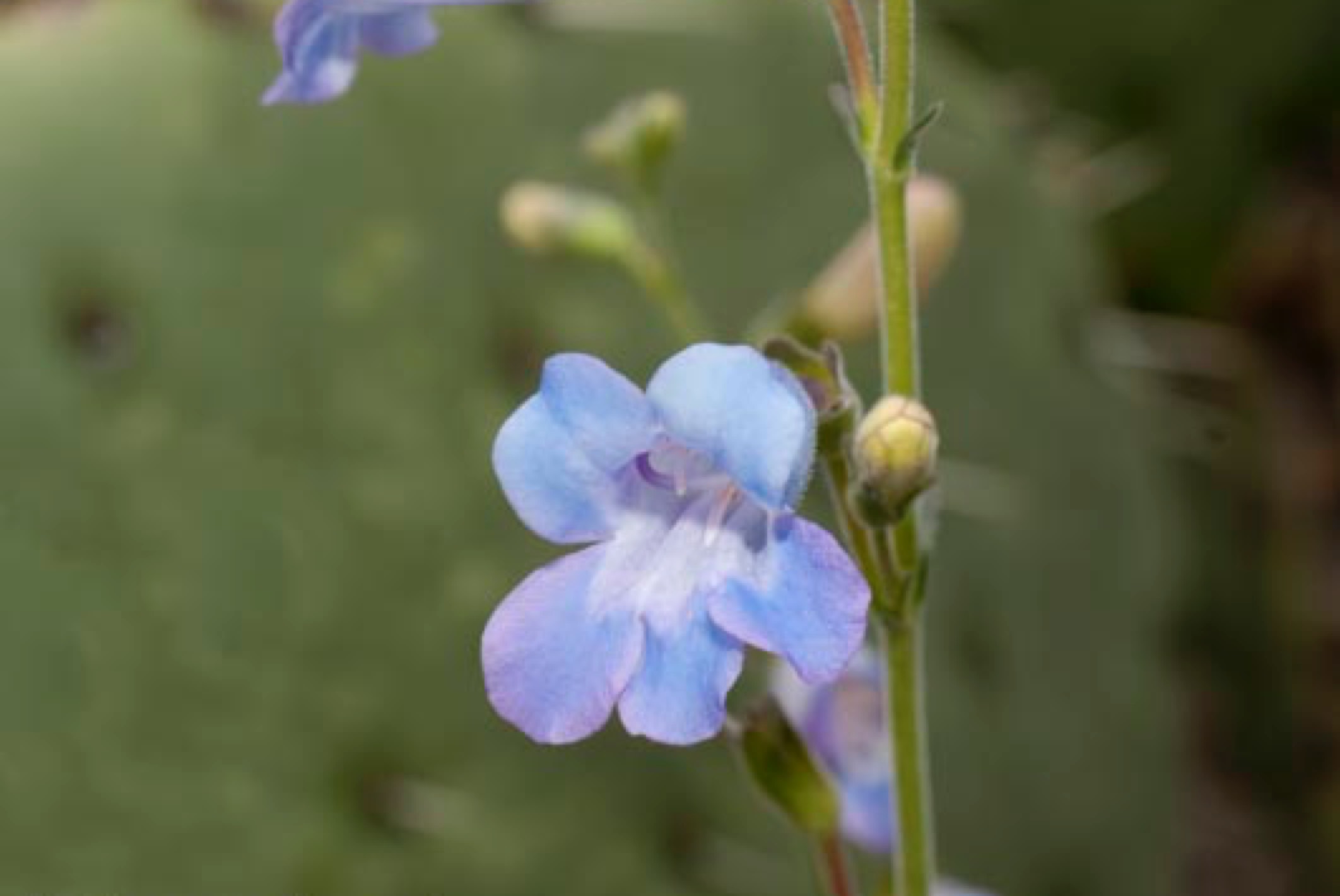Texas Wildbuds
Penstemon dasyphyllus
(Cochise Beardtongue)
| Scientific Name | Penstemon dasyphyllus | USDA PLANTS Symbol | PEDA |
| Common Name | Cochise Beardtongue, Purple Penstemon | ITIS Taxonomic Serial No. | 33870 |
| Family | Plantaginaceae (Plantain) | SEINet Reference |
Click Here |
| Description | Habitat: Gravelly soils in dry, open areas; desert grasslands, hillsides; 3500 to 5000 ft; somewhat rare. Plant: Erect perennial 12 to 16 inches tall with pubescent-hairy stems and leaves. Leaves: Light green, opposite, narrowly-linear to lanceolate and folded blades, 2-3/4 inches long. Inflorescence: Glandular-hairy terminal racemes of typical beardtongue-shaped blossoms; blue with tinges of purple, tubular corolla about 1 inch long, flaring open into two-lobed upper lip and three-lobed lower lip; throat light-colored; white, hairless staminode (infertile stamen); longer stamens with curved white filaments and hairy, pinkish anthers; cream-colored buds toward the tops of stems. Bloom period: February to May. References: "Wildflowers of Texas" by Michael Eason, American Southwest and SEINet. |
BONAP Distribution Map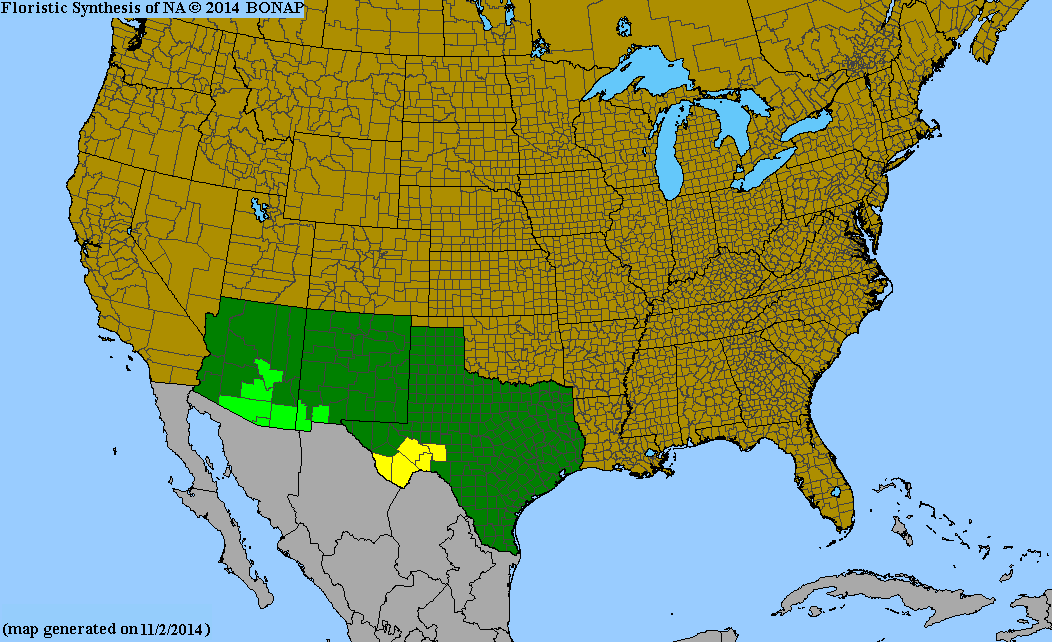 Map Color Key Map Color Key | Texas Status: Native |
Banner photo of Castilleja indivisa and Lupinus ssp. taken along FM 1323 north of Johnson City, Blanco County
© Tom Lebsack 2025
Every attempt is made to provide accurate, up-to-date, and relevant information, but the completeness or accuracy of any information presented on this website cannot be guaranteed. I use authoritative references to insure high standards of accuracy and review and update the information frequently.
